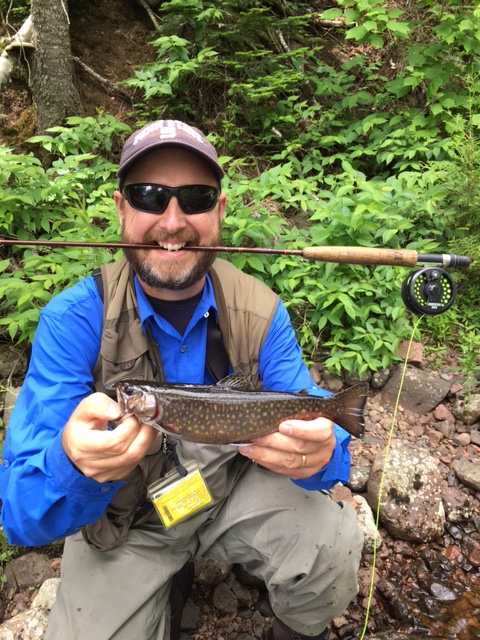
As I crept along a tumbling stream in the heart of the Bald Eagle State Forest with hemlock trees towering overhead and dense rhododendron crowding the banks, I looked for an area that would allow a cast in the tight confines of such an environment. Clear water cascaded over a logjam in front of me, creating a small pool below. Feeling certain there were fish holding there looking for an easy meal, I had just enough room to make a slight roll cast that landed my Adams dry fly right on the edge of the swirling current. Immediately the offering disappeared, and I saw a flash of color beneath the surface when I raised the rod and set the hook. After making two wide runs the length of the pool, a gorgeous seven-inch wild brook trout came to hand and was quickly released.
 Brook trout are our state fish in Pennsylvania, and they require cold and extremely clean waters for their survival. As the calendar months transition from winter to spring and with thoughts of fishing in mind, it is a great time to consider all that healthy forests do to not only sustain brook trout but provide clean water for all living things. One of the original reasons for establishing our state forest system was for watershed protection as it was recognized early on that forests controlled runoff and erosion and filtered the waters.
Brook trout are our state fish in Pennsylvania, and they require cold and extremely clean waters for their survival. As the calendar months transition from winter to spring and with thoughts of fishing in mind, it is a great time to consider all that healthy forests do to not only sustain brook trout but provide clean water for all living things. One of the original reasons for establishing our state forest system was for watershed protection as it was recognized early on that forests controlled runoff and erosion and filtered the waters.
Consider that less than one percent of all the water on earth is suitable for people to drink. Forests increase the amount of water that is available for human use and reduce the amount of water that travels across the surface of the land. The role forests play in providing clean water simply can’t be overstated. Layers of the forest canopy, branches and roots can store and release water vapor, which in turn controls rainfall. Forests can also help reduce the impacts of flooding from storms by blocking and slowing down the flow of runoff. As we continually unravel the interconnectedness and interdependence of life, we will most certainly discover even more ways our forests are protecting our waters.

As an avid angler, in any given year I am fortunate enough to fish from the headwater streams in our northern state forests to our southcentral rivers like the Juniata and Susquehanna and further south in the Chesapeake Bay. These angling opportunities – from brook trout to smallmouth bass to striped bass and shad – exist as they do thanks to the work of healthy forests.
Forested lands, in whose shaded cold water streams brook trout dance, are filtering the water and holding back sediment and pollutants that would most surely find their way to the Chesapeake Bay and beyond. Forests act as a natural filter as water moves over land, cleaning it of pollutants so it arrives at our lakes, rivers, and streams in a better condition. We call this an ecosystem service, which is something our environment provides that people need, but don’t have to pay for. As you wet a line in one of Pennsylvania’s beautiful state parks or state forests or in any of the abundant waters of the state, take time to think about all that our forests are doing to make it possible. To find out more about fishing on DCNR lands please visit: https://www.dcnr.pa.gov/Recreation/WhatToDo/Fishing/Pages/default.aspx
Written by Jeff Woleslagle, Chief of Communications for the PA DCNR’s Bureau of Forestry and an avid angler. He is the current President of the Pennsylvania Outdoor Writers Association and resides in Duncannon, Pennsylvania in close proximity to his favorite rivers.




